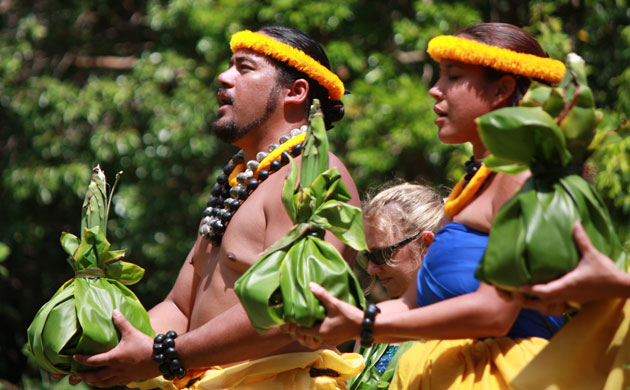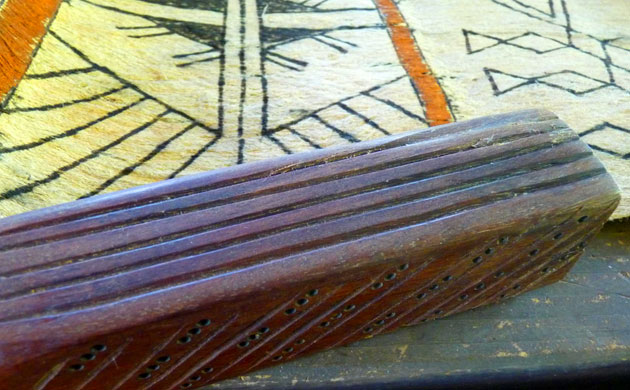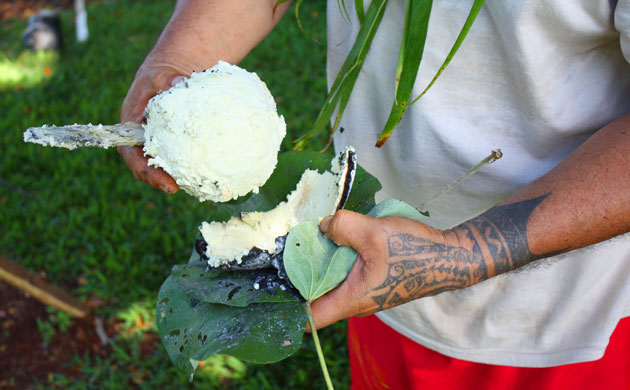The relationship between people and plants is an important one. NTBG is committed to bridging the gap between contemporary science and traditional knowledge of plants, how they were used and managed through our research, conservation, and education programs.



The importance of environmental stewardship is deeply rooted in many indigenous cultures which resulted in sound conservation practices and a holistic approach to sustainable land, water, plant and animal resources in ways that led to sustainability. For example, the ancient Hawaiians practiced good resource management by employing the ahupua‘a system. This approach recognized the interconnection between the mountains and the ocean and the roles that fresh water played in linking the two. By operating within the ahupua`a system, the Hawaiians were able to maintain the integrity of their natural resources.
Today, NTBG recognizes the wisdom of the ahupuaʻa system of resource management, and bases its conservation efforts on its principles. Restoration projects at Limahuli Garden and Preserve, as well as those in the Lawaʻi Valley, employ concepts learned from cultural practices of ahupuaʻa. A key consideration is maintaining the integrity of the watersheds by restoring endemic plant habitats and populations.
Ethnobotanical studies of indigenous cultural practices and traditional knowledge about plants extend beyond the boundaries of our gardens. Researchers from NTBG’s Breadfruit Institute have visited nearly 50 islands in the Pacific, documenting traditional uses and cultural practices. Students learn about the role of plants in indigenous societies. Under the Indigenous Communities Mapping Initiative, NTBG is documenting the way native Hawaiians viewed and cared for the natural world in which they lived.
NTBG gardens are rich in culture and history, which provide opportunities not only for scientists to learn about traditional knowledge, but also to share that knowledge through education programs. Teaching gardens, called “Canoe Gardens,” have been created in theMcBryde Garden and Limahuli Garden on Kauaʻi, and at Kahanu Garden on Maui. These gardens contain the plants that are believed to have been brought to Hawaiʻi by migrating Polynesians who settled the islands. Cultural knowledge is perpetuated in the gardens by staff and local indigenous practitioners who show students traditional skills, such as how to extract a shampoo from ‘awapuhi (Zingiber zerumbet, a member of the Ginger family) or how to harvest and pound wauke (Broussonetia papyrifera, of the Mulberry family) into a fabric.
Pi’ilanihale at Kahanu Garden (a heiau – an enormous lava-rock platform used for ceremonial or religious purposes) has been dated to the 13th century. It has been painstakingly restored, and research continues in an effort to learn about its origins and early uses. Pi’ilanihale is being managed using traditional cultural knowledge and practices.
Limahuli Garden and Preserve and Kahanu Garden are excellent examples of how culture and botany are connected. NTBG is ensuring that both its cultural and botanical resources are appropriately developed.
Integral to studying traditional knowledge and culture is the accurate understanding and use of indigenous languages. These marks facilitate correct pronunciation, but they also distinguish words that are otherwise spelled in the same way. For example, in Hawaiian the word “pi’a” refers to a yam, while “pia” is an arrowroot plant. For ethnobotanical researchers, mastery and correct use of native languages may be the only way to ensure the accuracy of the information they are gathering.